Leading Supplier of Scaffolding Coupler
Scaffold couplers, which are used to connect steel pipes when building scaffolds, and connectors between steel pipes and other structures, are widely used in various types of scaffolding projects. There are usually European standards and Japanese standards. iMW(iMetalwork) as China leading scaffolding coupler supplier, focus on introducing European standard scaffold fasteners to meet the use of the following countries, Austria, Belgium, Cyprus, Czech Republic, Denmark, Estonia, Finland, France, Germany, Greece, Hungary, Iceland, Ireland, Italy, Latvia, Lithuania, Luxembourg, Malta, Netherlands, Norway, Poland, Portugal, Slovakia, Slovenia, Spain, Sweden, Switzerland and United Kingdom.

Scaffolding Couplers Types

Swivel Scaffolding Coupler
Scaffolding pipe can be crossed at any swivel scaffold couplers.

Sleeve Scaffolding Coupler
Sleeve scaffolding coupler makes tube arrangement end to end coaxially.
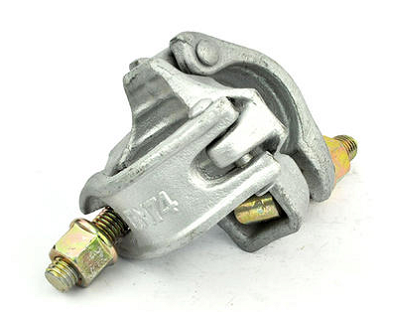
Right Angle Scaffolding Coupler
Ringt angle scaffolding coupler let tube arrangedat right angle.
According to British Standard, EN74-1:2005, Scaffold couplers can be divided into the following four types on the basis of usage scenarios:
Right Angle Coupler



Right Angle Coupler: also known as Double Coupler or Fixed Coupler, is usually used to fix pipe vertically and firmly, eliminating the possibility of the steel pipes slipping off. It relies on the friction between the coupler and the steel pipe to transfer the load. Such as the connection of the vertical rod and the large crossbar, the large crossbar and the small crossbar of scaffolding.
Swivel Coupler



Swivel Coupler: Used for cross-connection and fastening of two scaffolding steel pipes at any angle. Connects and fixes two components and can rotate flexibly to facilitate construction.
Parallel Coupler


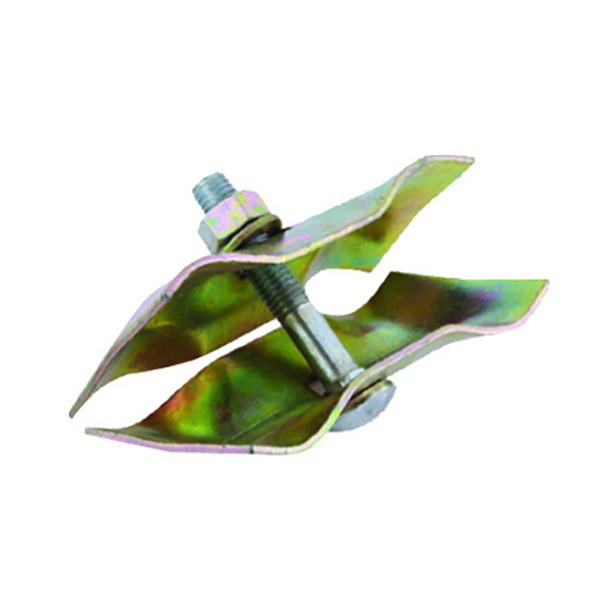
Parallel Coupler: Used for fixing two parallel scaffolding steel pipes, mainly used for fastening fence.
Sleeve Coupler Sketch


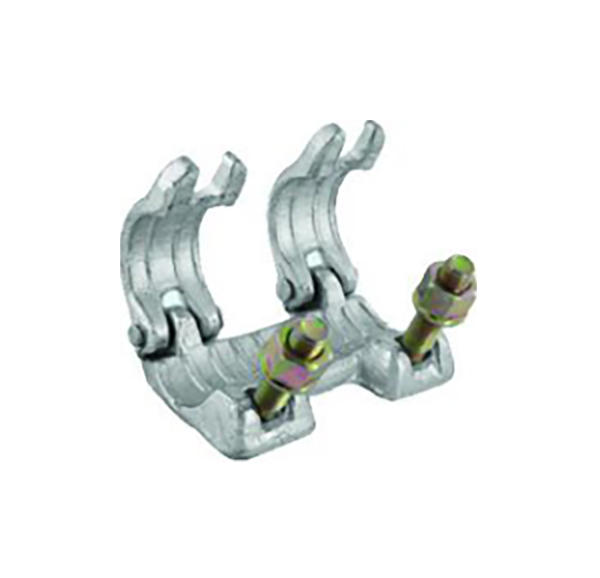
Sleeve Coupler Sketch is usually used to connect two steel pipes firmly to make them one. Sleeve coupler sketch can make up for the shortcomings of a steel pipe too short.
According to the requirements and usage scenarios of different countries, scaffold couplers can be divided the following types:
German type:
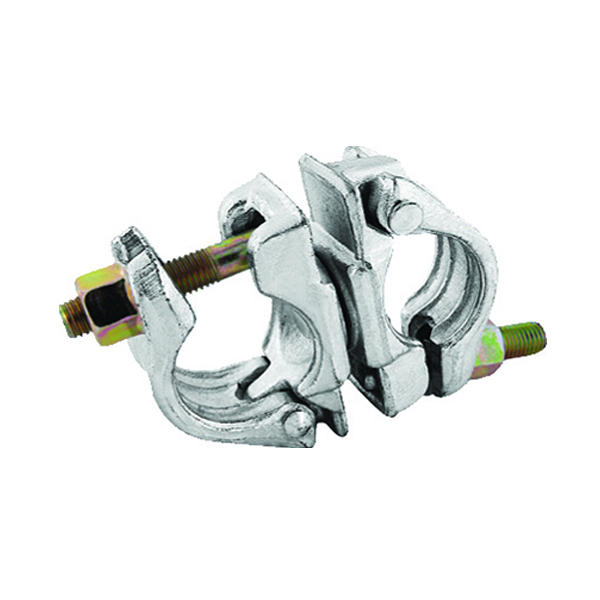

Mainly used in German scaffolding system.
British type:

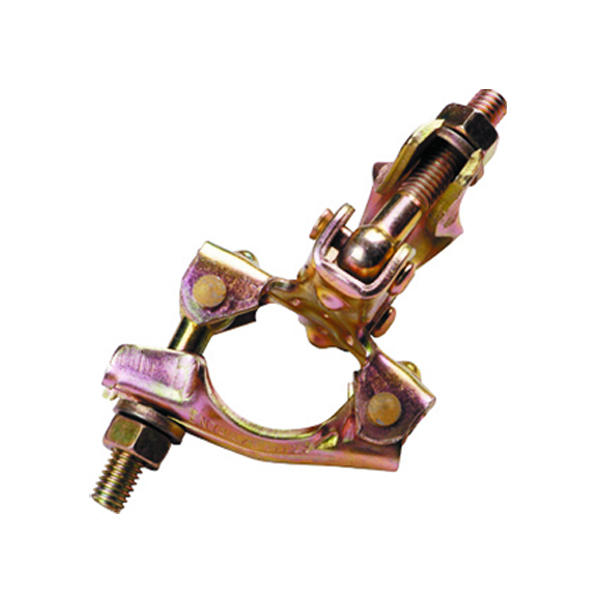
Mainly used for scaffolding systems used in the UK and Commonwealth countries.
Italian type:


Mainly used for scaffolding systems in Italy.
American type:


Mainly used in Scaffolding system of the United States.
Korean, Japanese type:


Mainly used for scaffolding systems in Japan & Korea.
According to different production processes, there are mainly the following three types:
Forged scaffolding couplers:


Forged scaffolding couplers:This production process can lead to a result that the toughness of the scaffold coupler will be guaranteed while ensuring the strength. This is where forged scaffold coupler is superior to the pressed coupler and casting coupler. Use a high frequency electric furnace to heat the carbon structural steel of the corresponding specification to austenite state at 950°-1050°C, and undergo a one-time forging of 300-600KN to improve its structure and mechanical properties, improve product toughness and protect its strength.
Pressed couplers:


Pressed couplers:Compared to forged coupler, pressed coupler has a price advantage and especially make up for some products vacancies that cannot be produced by forging process,Use Q235, Q355, SPHC and other grades of steel plates, processed into couplers that meet the requirements of BS EN74-1:2005 through cutting, mold forming, galvanizing, assembly and other processes. Compared with forged couplers, it has a certain price advantage, and it also makes up for the production gap that cannot be realized by some couplers forging technology.
Casting couplers:


Casting couplers:Even casting scaffold coupler has high hardness its shortcomings of poor toughness that cannot be overcome finally leads to a decline in market share year by year. Heat the copper and iron to a liquid state, pour it into a casting mold, cool it naturally, and then assembleIt has the characteristics of high production efficiency, fast production cycle and low cost. Due to the insurmountable characteristics of castings: high hardness but poor toughness, the market share is declining year by year.
According to the different surface treatments, it is divided into the following three categories:
1.Hot-dip galvanized couplers: After degreasing, pickling, dipping, and drying, the scaffold couplers are immersed in the molten zinc solution for a certain period of time and then taken out.
2.Electro-galvanized couplers: Electro-galvanized couplers are scaffold couplers that need to be processed by degreasing and pickling with electrolysis equipment, then put them into a solution of zinc salt, and then connect the negative electrode of the electrolysis equipment; Place a zinc plate on the opposite side of the piece and connect it to the positive electrode of the electrolysis device, turn on the power, and use the directional movement of the current from the positive electrode to the negative electrode to gradually deposit a layer of zinc on the surface of the coupler.
3.Hight Protected paint couplers: Spray paint is a coating method that is sprayed through a spray gun or a disc atomizer, dispersed into uniform and fine droplets by means of pressure or centrifugal force, and applied to the surface of the coupler.

Electro-Galvanized Couplers
Electro-galvanized couplers are divided into electroplated blue and white zinc couplers,

Hight Protected Paint Couplers
Spray paint is a coating method that is sprayed through a spray gun or a disc atomizer,

Hot-Dip Galvanized Couplers
Hot-dip galvanizing is a galvanizing method in which couplers are immersed in molten zinc,
The following are the standard parts used in the deduction: screw, nut, gasket and other information:
Common Bolt Type: T-Bolt, Eye Bolt, Spliting End Bolt. The diameters of the six common coupler bolts, the effective length of the bolts and the applicable countries are as follows:



| Dia. | Effective length / Bolt length | Use |
T-Bolt | 1/2 | 75-88 | United Kingdom and the Commonwealth of Nations |
M14 | 75-87 | USA, Germany and some Eurupean countries | |
M14 | 98-110 | USA, Germany and some Eurupean countries | |
Eye Bolt | 1/2 | 67-86 | United Kingdom and the Commonwealth of Nations |
| M12 | 57-73 | United Kingdom and the Commonwealth of Nations | |
| M14 | 70-90 | USA, Germany and some Eurupean countries | |
Spliting End Bolt | 1/2 | 45-82 | For Putlog coupler, BRC, etc. |
Carriage Bolt |
1/2 | 116-125 |
For tube external clamp, universal clamp, etc. |
| 85-92 | |||
Hexagon Bolt | M16 | 72-80 | For Girder Coupler, DF Joint Pin |
Flat T-Bolt | 1/2 | 66-76 | For Italian couplers |
Common Nut Type:Hexagon nuts,wing nuts, flange nut.



According to the size of wrenches in different countries, the common coupler nut sizes are 19mm, 21mm, 22mm, and 23mm. Among them, 19mm nuts are generally used in scaffolding couplers in Japan, South Korea and some Southeast Asian countries, 21mm nuts are generally used in related couplers in the United Kingdom and Commonwealth countries, and 22mm nuts are suitable for scaffolding systems in the United States, Germany and some European countries, and 23mm nuts are mainly used in Australia.
The bolt diameter and unit width and height of common hexagon nuts are shown in the following table:
Width across flats for hexagon nut, And Using Countries | ||
Width | 21 | United Kingdom and the Commonwealth of Nations |
Width | 22 | USA, Germany and some Eurupean countries |
Width | 23 | Australia |
Width | 19 | Japan, South Korea and some Southeast Asian countries |
| Dia. | Effective length / Bolt length | Use |
T-Bolt | 1/2 | 75-88 | United Kingdom and the Commonwealth of Nations |
M14 | 75-87 | USA, Germany and some Eurupean countries | |
M14 | 98-110 | USA, Germany and some Eurupean countries | |
Eye Bolt | 1/2 | 67-86 | United Kingdom and the Commonwealth of Nations |
| M12 | 57-73 | United Kingdom and the Commonwealth of Nations | |
| M14 | 70-90 | USA, Germany and some Eurupean countries | |
Spliting End Bolt | 1/2 | 45-82 | For Putlog coupler, BRC, etc. |
Carriage Bolt |
1/2 | 116-125 |
For tube external clamp, universal clamp, etc. |
| 85-92 | |||
Hexagon Bolt | M16 | 72-80 | For Girder Coupler, DF Joint Pin |
Flat T-Bolt | 1/2 | 66-76 | For Italian couplers |
| Thickness | Inner / Outer Dia. |
Washer | 3.5 | 13-26 |
5 | 13-26 |
According to different usage scenarios and different sizes of copper pipes, the most commonly used coupler specifications are: 48.3*48.3. There are also some special specifications as shown in the following table:
Double Coupler | Swivel Coupler | ||
48.3*34 | 48.3*34 | 34*34 | 34*38 |
48.3*38 | 48.3*38 | 38*38 | 38*42 |
48.3*42 | 48.3*42 | 42*42 | 42*60 |
48.3*48.3 | 48.3*48.3 | – | – |
48.3*60 | 48.3*60 | 60*60 | 60*76 |
48.3*76 | 48.3*76 | 76*76 | 86*89 |
– | 48.3*89 | 89*89 | – |
Our scaffolding coupler has obtained many international certificates, such as EN 74-1:2005 and EN 74-1:2005 Clause 7.4.3, etc.
Drop Forged Double Coupler

In test (Slipping Force)

In test (Failure Force)
Slipping Force: The first time the pressure is applied, when the pressure is greater than 10kN, the sliding distance of the scaffold steel pipe should be less than 7mm. The test result is: when the pressure is 10.6kN, the sliding distance of the steel pipe on the coupler is less than 7mm, which meets the standard requirements. The second pressure is applied, when the pressure is greater than 15kN, the sliding distance of the steel pipe on the coupler should be between 1mm-2mm. The test result is: under a pressure of 30kN, the sliding distance of the second test is less than 1mm, which is consistent with Claim.
Failure Force:The bearing weight of the scaffolding coupler must reach 20KN. The test result: It can bear a weight of 24KN, and the destructive resistance of the coupler reaches the standard.
Summary of Results:
No. | Test Item | Test Method |
| 1 | Slipping Force | EN 74-1:2005 |
| 2 | Failure Force | EN 74-1:2005 |
Test Results:
Test Clause | Test Item | Test Requirement | Test Result | Conclusion |
7.2.1
|
Slipping force | △1≤7mm, Fs,5%≥10.0kN | △1=7mm, Fs,5%=15.88kN |
Pass
|
1mm≤△2≤2mm, Fs,5% ≥15.0kN | 1mm≤△2≤2mm, Fs,5%=15.91kN | |||
7.2.2 | Failure force | Ff,5%/γR2 ≥30.0kN | Ff,5%/γR2=50.63kN | Pass |
Drop Forged Swivel Coupler Class “B”
Under normal circumstances, it is difficult to reach B grade, but we reached

In test (Slipping Force)

In test (Failure Force)
Summary of Results:
No. | Test Item | Test Method |
| 1 | Slipping Force | EN 74-1:2005 |
| 2 | Failure Force | EN 74-1:2005 |
Test Results:
Test Clause | Test Item | Test Requirement (Swivel coupler, Class B) | Test Result | Conclusion |
7.2.1
|
Slipping force
| △1≤7mm, Fs,5%≥10.0kN | △1≤7mm, Fs,5%=10.6kN |
Pass
|
1mm≤△2≤2mm, Fs,5% ≥15.0kN | Fs=30kN, △2˂1mm | |||
7.2.2 | Failure force | Ff,5%/γR2 ≥20.0kN | Ff,5%/γR2=24.4kN | Pass |
Pressed Sleeve Coupler

In test (Slipping Force)

After test
Summary of Results:
No. | Test Item | Test Method |
| 1 | Bending Moment Resistance | EN 74-1:2005 Clause 7.4.3 |
| 2 | Slipping Force | EN 74-1:2005 Clause 7.2.1 |
Test Results:
Test Item | Test Result | Test Requirement (Sleeve coupler, Class B) | Conclusion |
Bending Moment Resistance | △4=5mm, Mb,5% =1.43kNm | △4=5mm, Mb,5% ≥1.4kNm | Pass |
Putlog / Wrapover Coupler

In test (Slipping Force)

After test
Summary of Results:
No. | Test Item | Test Method |
| 1 | Slipping Resistance | BS 1139-2.2:2009+A1:2015 Clause 7 & Annex A.2 |
Test Results:
Test Item | Test Result | Test Requirement | Conclusion |
Slipping Resistance | 1mm≤△2≤2mm, Fs,5% =1.83kN | 1mm≤△2≤2mm, Fs,5% ≥1.04kN | Pass |
Girder / Gravlock Coupler

In test (Strength test)

In test (Slip test along tube)

In test (Slip test along tube a flange)
Summary of Results:
No. | Test Item | Test Method |
| 1 | Strength test | AS/NZS 1576.2:2016 Appendix L |
| 2 | Slip test along tube | AS/NZS 1576.2:2016 Appendix M |
| 3 | Slip test along tube a flange | AS/NZS 1576.2:2016 Appendix N |
Test Results:
Test Clause | Test Item | Test Requirement | Test Result | Conclusion |
Appendix L | Strength test | P=30.0kN, neither flange clamp shall show any permanent set | P=30.0kN, neither flange clamp showed any permanent set | Pass |
Appendix M | Slip test along tube | P=12.5kN, Slippage ≤ 6mm | P=12.5kN, Slippage<6mm | Pass |
Appendix N | Slip test along tube a flange | P=12.5kN, Slippage ≤ 6mm | P=12.5kN, Slippage<6mm | Pass |
Board Retaining Clamp

In test (Failure Force)

After test
Summary of Results:
No. | Test Item | Test Method |
| 1 | Failure Force | With Reference to EN 74-1:2005 |
Test Results:
Test Item | Test Result | |||||
1# | 3# | 3# | 4# | 5# | Fp,5%/γR2 | |
Failure Force(kN) | 42.84 | 38.89 | 43.60 | 42.91 | 40.79 | 29.8 |
Scaffolding Couplers Manufacturer
All forged scaffolding coulpers use high-frequency electric furnace to heat different specifications of structural steel to 950-1050 austenite state, after 4000KN one-time forging can improver its organizational structure and mechanical properties, thereby improving the plasticity and mechanical properties of the product.

Scaffolding Couplers Catalogue
Here is catalogue of iMW scaffolding Couplers. You can see all our scaffolding couplers: Board Retaining Coupler,BS Drop Forged Double Coupler,BS Drop Forged Swivel Coupler,German Drop Forged Swivel Coupler,German Drop Forged Double Coupler,BS Pressed Double Coupler,BS Pressed Swivel Coupler,JIS Pressed Double Coupler,JIS Pressed Swivel Coupler,Korean Pressed Swivel Coupler,Korean Pressed Double Coupler,Putlog Coupler,Beam Coupler,Casted Panel Clamp,Limpet,Pressed Panel Clamp,Sleeve Coupler,JIS Inner Joint Pin,Bonne Joint,Fencing Coupler, etc. products here.

Scaffolding Couplers Components Container Loading



Recommended Products
Quick Navigation
Get In Touch
-
11/F Winner Building, 36 Man Yue Street,
Hung Hom, Kowloon, Hong Kong - +86 181 550 37937
- ali@imetalwork.com

